Ancient Psychedelia: Alien Gods & Mushroom Goddesses
Online Book - Chapter 1, Page 21
Back to Online Book Mainpage / Next Page (Chapter 1, Page 22)
Next he mentions his theory regarding the migration of the people and the soma ritual in the Indus Valley: “The Rig Veda, the earliest document of the Indo-Aryan has no mention of great cities like Harappa or Mohenjo-daro, so the only other possibility is that a soma-like cult based on some kind of hallucinogenic drug, crushed and filtered out of a plant and drunk ritually, must have existed in Harappa and that it was taken over by the Indo-Iranians and incoming Indo-Aryans.” This he bases partially on the work of R. Gordon Wasson, regarding the “hallucinogenic properties.” (74) (75) Several of the images of this “cult object,” actually looks more like a mushroom than a filter, but that is the occulted symbolism that is being used by the ancient people, it seems. Most mushroom related artworks contain this double imagery.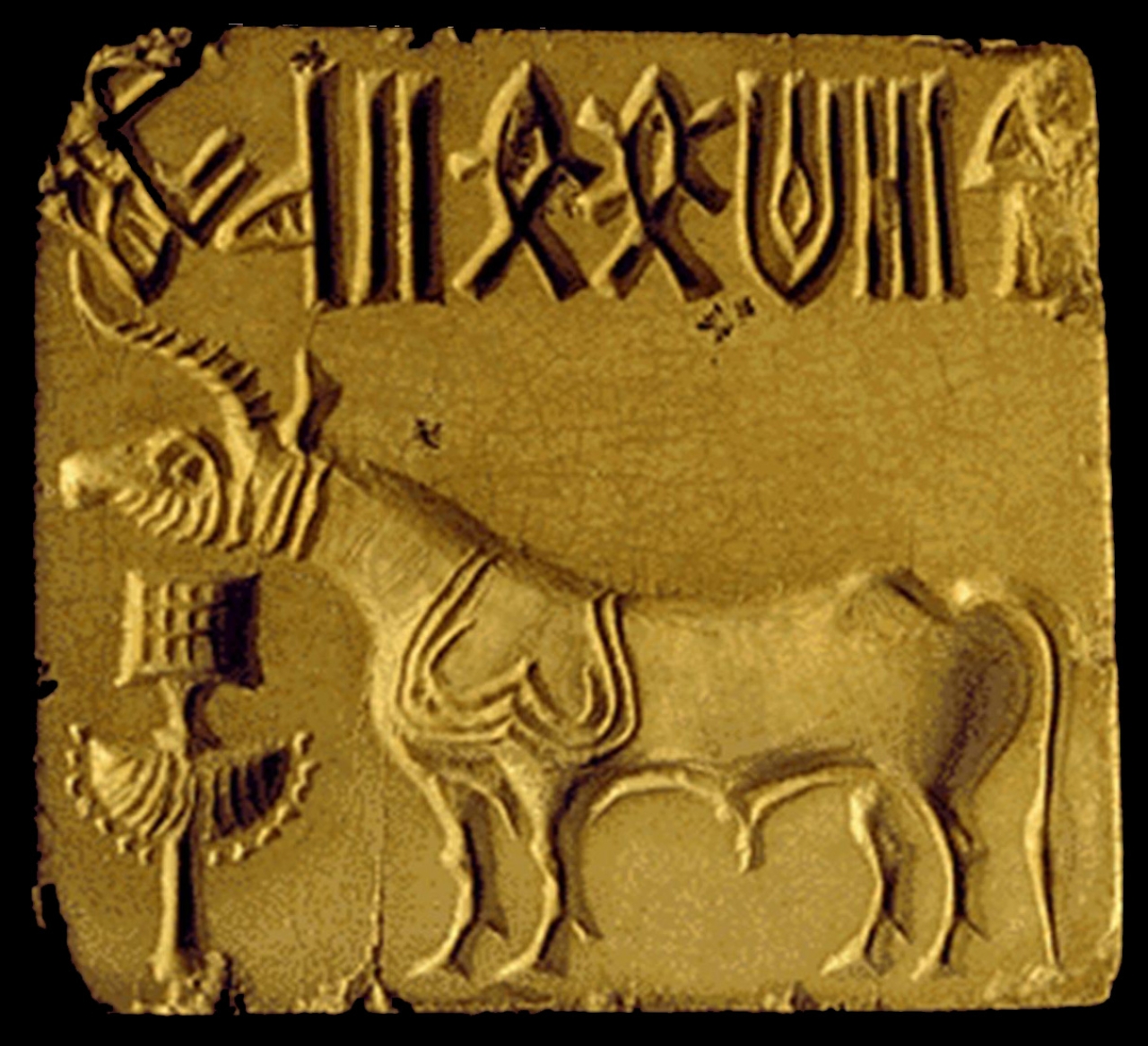 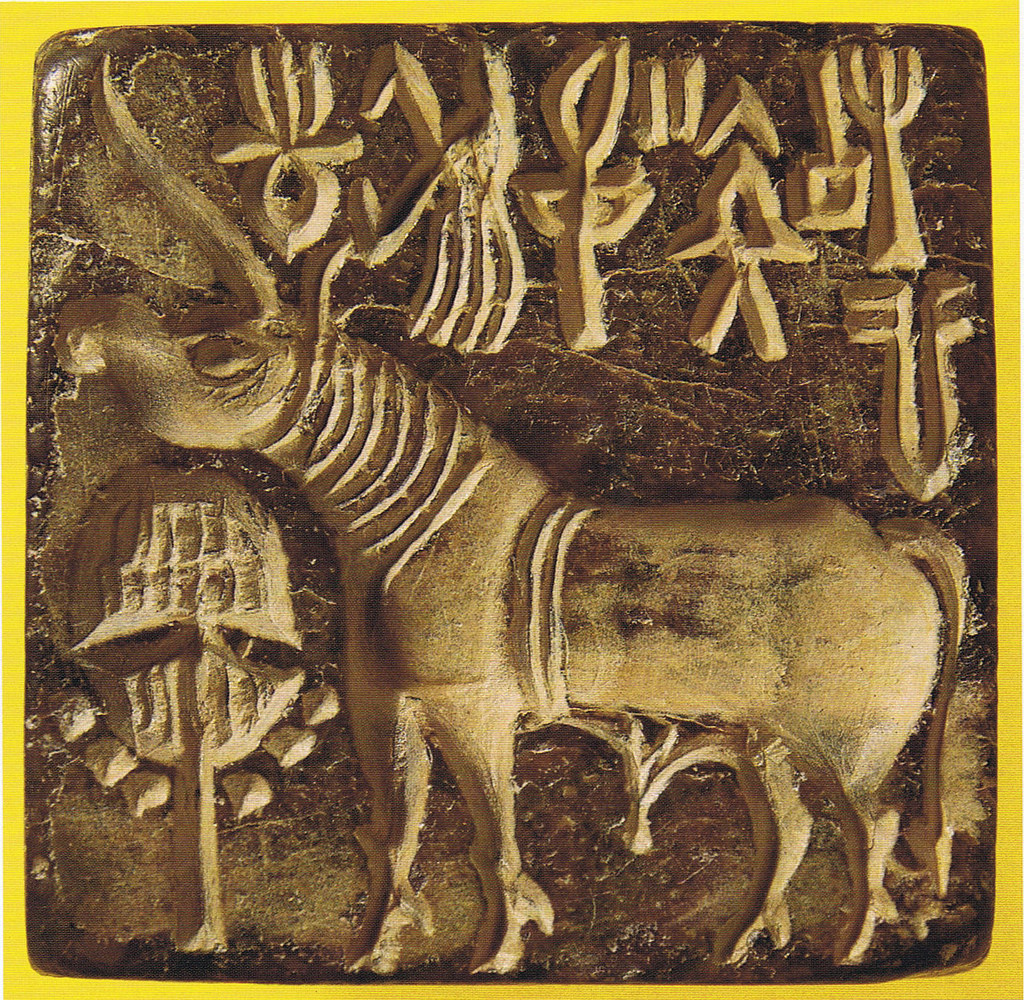 (12a) Harrapan Seals Indus Valley c. 2200 BC 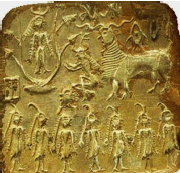 (12a) Harrapan Seals Indus Valley c. 2200 BC At Mohenjo Daro, male figurines of shamans are present but not as abundant as female figurines. In a carved seal from Mohenjo Daro there appears a three faced male shaman sitting in a yoga posture, displaying a pair of horns on his head and surrounded by four animals; an elephant, tiger, rhinoceros and buffalo as well as two deer (12a bottom left). (76) The iconography is reminiscent of the Hindu god Shiva, in his aspect as Pasupati, or Lord of the Beasts while several other seals display a similar nude figure associated with the pipal-tree or sacred fig tree and various animals. (77) Another Harrapan Seal shows what appear to be two “unicorns” (bulls, actually) emerging from each side of a mushroom. There is a perfectly shaped mushroom, and a cap above it with objects which appear to be leaves emerging from the top (12a bottom right). |
Other stamp seals from Harrapa reveal mushroom shaped structures on them (12b, c). 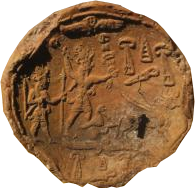 (12b) Hittite Seal Iimpression of King Mursilis III Boğazköy (Erdinç Bakla Archive) c. 1282-1275 BC 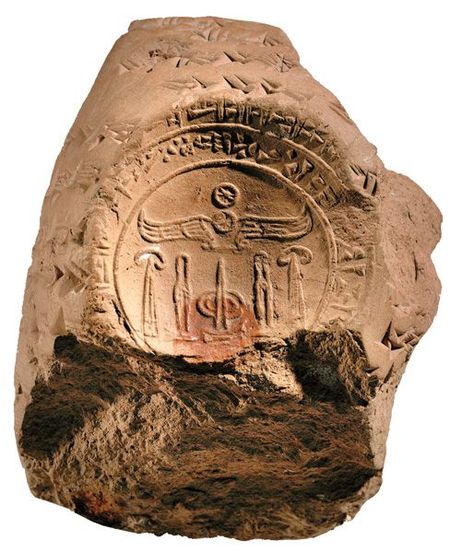 (12c) Hittite Seal of Tudhaliya IV c. 1237–1228 BC The existence of psilocybin consuming communities in modern India have been documented in the Santal tribe in Bahir, which are aware of the existence of the mushrooms that grow on cow dung. (78) When, exactly they became aware of it is another matter entirely. Psilocybin mushrooms (Panaeolus camboginiesis), which grow on the dung of water buffalo have been documented by Paul Stamets. (79) In Northern India, Ps. Semilanceata grows on mats of decaying grass and is reported to be “moderately active to extremely potent.” (80) (74) Secret Drugs of Buddhism, p.36-38 (75) https://www.harappa.com/script/mahadevantext3.html (76) Marshall, op. cite., vol. i, pp. 52ff., pl xii, 17 (77) The Cult of the Mother Goddess, p.34-5; (Mackay, op. cite., vol. i, p. 335; vol. ii, pls. lxxxviii, 222, 235; xciv, 420). (78) R. G. Wasson, 1989 (79) Stamets, Psilocybin Mushrooms of the World, 1996, p. 144 (80) ibid, p. 72-3 |
Go Back to Page 20